
I have always enjoyed playing cards. Over the years, mostly Hearts, Spades, Youker and always a little Bridge, if there were three other players. It was just social Bridge with family and friends, but many great bridge game memories, three generations of the family, backpacking in France with some interesting French kids. I created a problem for them, pretty stupid because I could not speak much French, but could destroy them in Bridge.
A few months into retirement I got up the courage to look up and visit the Colorado Springs Bridge Center. What a great decision. It was and is a friendly and encouraging environment to learn and play bridge, and I had a lot to learn. My card play was pretty good, but my crude knowledge of 50 fifty-year-old bidding conventions required a lot of work. I read a few modern bidding books, and took some lessons at the club, primally from John Dukellis, who also worked to introduce me to some supportive partners. Soon I started to have better results and enjoyed playing more club games.
The points started to add up over the next few years, but not the red and gold points, as I was a bit intimidated by the larger tournaments where those colors are to be earned. So last year after a few beers, some friends/partners convinced me that I too could be competitive at the Regionals, so plans were made to attend the Albuquerque, Denver, and Taos regionals with some solid partners and teams. The results were better than expected with some good results in the team and gold rush games, getting within six red points after Taos. The target was then set on the upcoming return to Albuquerque in January to grab the last six red, but a surprisingly strong showing in the D17 November STaC game delivered the needed red points.
As a goal oriented person, I am pleased to attain this rank, but the journey has been more rewarding. Playing bridge has introduced me to so many interesting people, really friendly successful people. I look forward to the mental challenge of the games at the club, but also the conversations at the table and the social meetups after the games. Walking into the Colorado Springs Bridge Center, improving my game, and getting to know the members was one of the best decisions of my retirement.
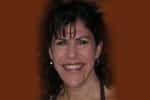
I come from a long line of bridge players. My grandparents (Reva and Joe Silver from Topeka, KS) and my mother (Carolyn) were avid players. One of my first memories of the game is when my mother and grandparents needed a 4th to practice. They sat me down at the kitchen table and handed me 13 cards. I was instructed on sorting my hand into suits, the rank order of honor cards and counting my high card points. After I completed this task, they would follow with a series of questions. How many aces do you have, how many kings, and so on. After I answered their questions, and added my HCP correctly, they would all shout out my appropriate bid, “bid 1NT.” I also have vivid memories of their loud heated conversations when they returned home from the bridge club. I assume they were discussing what they had done well, but it mostly sounded like what they did wrong. At that time, bridge was a huge turn off and I had no interested in learning a game where everyone was arguing all of the time.
At age 45, some of my friends decided to take bridge lessons. I was finally ready to learn with my peers. I took a few lessons and got the bug! I am an engineer and found the game to be very mathematical which was right up my alley. Like many bridge players, I become obsessed with the game and hungry to learn as much as possible and play as often as I could. As soon as my mother found out I started taking lessons, she quickly took me under her wing. We played good ole’ fashion Standard American with standard carding. We were very successful. I remember my first duplicate game we played. My mother sat me down and gave me a crash course on how to use a bidding box. I remember how nervous I was when I had my first director call against me. My mother gave me a kind look from across the table that calmed me that everything will be okay. I have very fond memories of the first club game we won. My mother took me to the recap sheet and showed me that we had a #1 next to our names and said “you are now a junior master.” I had absolutely no clue what she was talking about.
I attained my Life Master and Bronze Life Master concurrently in 2010. My mother was so proud of my accomplishment and threw a party for me at the club. My mother and I played until she passed away in 2017. I still have people at the club tell me how jealous they were that I got to play with my mother and what a nice partnership we had. After my mother died, I began to play with a lot of my bridge friends. I started to play 2/1 and adding new and fun conventions to my repertoire. I also began traveling to many out of state tournaments and my bridge success continued.
I have served on several committees for the Denver unit. In 2018, I was asked to join the Denver Regional Pro/Am committee. I assisted in the recruitment of novice players and help with administrative work.
When the pandemic hit, I initiated the idea to run the 2020 Denver Rocky Mountain Regional PRO/AM as an online. At the same time, the owner of our local bridge club asked my partner and myself if we could start teaching lessons online. We worked to develop and teach our Quick Bridge program online for free. We are now teaching this program at the club and have written a bridge workbook we hope to publish in the future. I also teach and mentor newer players as well, this includes a group of women that I have been teaching once a week for the last three years. Teaching and mentoring have been the most rewarding part of my bridge journey. The bridge club is my second home. I owe my success to all of my partners; I could not have attained my sapphire life master without them.
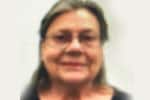
I fell in love with the game more than 50 years ago and played during my college days, then life happened. When I retired, I decided to start playing again and quickly discovered the game was not the same. Luckily, I found my current bridge club, In Tempo Bridge Club and count myself incredibly fortunate to have Bjorgvin Kristinsson as my teacher and mentor.
I found the ACBL tournaments for beginners very helpful. I started with the 0-5 Just Declare Daylong Tournament, then the 0-20 Tournament and now play the 299er Daylong Tournament and found myself humbled by it on a regular basis. I also attend the ACBL Community Games and lessons on Tuesdays and Thursdays.
Through Bjorgvin, I found the District’s 199er NiteClub games. I appreciate these games because they are easy to participate in and I have met such nice people playing in the games, plus you get the hand reviews after the game.
While I play a lot on line, I actually prefer the face to face play. Guess I am old school.
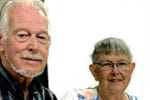
My story also is the story of my spouse Rosalie. When I had to leave my spouse and five children behind in December 1968, in order to serve in Vietnam (I was a career soldier), I placed them in Schilling Manor at Salina, Kansas. Schilling Manor was operated by the Army primarily for the families of US service members on unaccompanied assignments (mostly Vietnam). Schilling Manor had a bridge club that had affiliated with ACBL. On my return, I was in educational status at Kansas City for six months, and was able to be with my family at Schilling on weekends. We joined ACBL in the spring of 1970, as I recall, and played on my weekends in Salina. My next assignment was Fort Leavenworth, Kansas, where we played occasionally. When I was teaching at the Military Police School at Fort McClellan, Alabama, we played some at Anniston, Alabama. After I retired from the Army in July 1978, we built our own house with our own hands at Salina, Kansas. By then, the bridge club at Schilling Manor was gone, as was Schilling Manor. After the college in Salina where my spouse was teaching went out of business, she began teaching at Fort Hays State University at Hays, Kansas. Over a period of five years, we transitioned to Hays. By then, the children were all grown and gone. We began playing at the ACBL club at Hays. We qualified as directors, trained other directors. and even trained a director at LaCrosse, Kansas, to help keep that club alive. (We weren’t great directors, but were stalwarts of the Hays club, and we never charged a fee for directing.) We began playing a lot of tournaments and did all right (I think) for players of limited talent. We wouldn’t have done it if we didn’t enjoy it. We had already retired to Las Cruces, New Mexico, when we achieved the rank of Bronze Life Master. (Our club here is ACBL Unit 380.) My spouse Rosalie remains a good player, but I am clearly in decline. We didn’t expect to live long enough to reach Silver Life Master (I am nearly 83, and my spouse is only a year younger). But the unexpected happened a couple of weeks ago. It was nice of our club to have a celebration for us.
I started out playing party bridge in about 1999. My bridge partner and I went bonkers about duplicate! We earned our Life Master status in three years and I reached Bronze life Master status in one additional year. I then took a six year leave to be the Florida Governor of Kiwanis International. Then I studied Spanish in Guatemala, playing duplicate and in the Zone 5 WBF tournament. Returning to the United States, I went on to earn the rank of Ruby and Silver Life Master in just a few playing years while playing in many different locations. I got held up a good bit of the time with Legionnaire’s Disease after the Memphis NABC. Returning, I continued traveling. Then came covid and I had to learn to play online. After catching on, I earned Gold Life Master status. Along the way, I had lots of great partners and acquaintances from around the country.
I spent my time with my partner Bonnie between Vero Beach, FL and Abiquiu, New Mexico, a short way from my legal home club of Los Alamos.
Being vaccinated against covid, I look forward to a return to face-to-face tournaments.
Gold Life Master

An accomplished bridge professional, Mr. Von der Porten was born in Orinda, CA in 1936 and now resides in Las Vegas. His photo (above) was taken during the 1962 Bermuda Bowl at age 25.
Now retired, Mr. Von der Porten’s bridge accomplished are numerous: North American Bridge Championships (6) Blue Ribbon Pairs (1) 1986, Grand National Teams (1) 1982, Vanderbilt (1) 1967, Reisinger (1) 1962, Spingold (2) 1975, 1980 Runners-up, Bermuda Bowl (2) 1962, 1977, North American Bridge Championships/Rockwell Mixed Pairs (1) 1984, Blue Ribbon Pairs (1) 1965, Vanderbilt (3) 1961, 1963, 1971 and Mitchell Board-a-Match Teams (1) 1970.
He is also the author of several bridge publications: Introduction to Defensive Bidding (Prentice-Hall, 1967), 151 pp. and Introduction to Competitive Bidding, Charles Goren and Von der Porten (Doubleday, 1984), 179 pp.
Now playing online, Mr. Von der Porten is looking forward to face-to-face play and for covid to subside.
Emerald Life Master

I joined ACBL for the first time after graduating from college in the ’70’s. After a couple years and 1 Masterpoint, I quit playing duplicate bridge. I rejoined ACBL at the beginning of 2016 after almost 40 years of just a little rubber bridge. When I retired to Fountain Hills at the end of 2019, I had accumulated 75 Masterpoints. At the start of 2020, I reconnected with an old high school classmate who lives here and was interested in returning to playing bridge after almost 50 years. He had never been a member of ACBL or even played duplicate before. So I sort of brought him up to speed with bidding changes, and he was ready to go. We started playing at the Fountain Hills Bridge Club every Monday afternoon, and we did amazingly well for virtual beginners.
Unfortunately, it only lasted two months before the club shut down, along with everything else. But soon we started playing online at BBO. This was like a godsend during the pandemic. I started playing regularly with three other friends who I had also known for at least 50 years who all still live in the Midwest. By the end of 2020, my original partner and I had both come in first place in our respective Mini-McKenney races for our unit. I passed 200 total points, and he passed 100.
This year, all three of my Midwest partners became Life Masters under the new rules (500 total points). I just missed becoming one under the old rules when I finished August with 299.65 points. However, I woke up on October 7 and confirmed on the ACBL website that I had indeed become one in September after the overnight update. It was the start of a big day in my life. It happened to be my 70th birthday, and I was scheduled to go skydiving later that day, like I did on my 50th and 60th birthdays. As usual, it was a lot of fun. Even better, my daughters both flew in that evening to surprise me and stayed through the whole weekend.
The silver lining of the pandemic was that I became a Life Master a lot sooner than I ever would have without online bridge. It was even more fun playing with all old friends, which would not have been possible without online bridge. The FH club is reopening tomorrow, which we plan to attend, but I will continue playing with all of my other buddies. I really like playing, not just for the enjoyment and the challenge, but for keeping my mind active and hopefully avoiding dementia. I plan to play this great game until the day I die.
Life Master
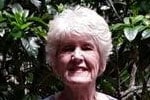
I returned to bridge at age 64 after a 40-year absence from Goren bridge (the only bridge in my era). I took beginning bridge at least twice and then learned every convention that was needed to play Standard American Bridge. Everything about the conventions seemed foreign and complicated. I just wanted to play simple bridge. I was hooked and played almost every time there was a bridge game at our Club in Long Beach, CA never dreaming how far I had to go to become an accomplished bridge player.
My partner Bill Rawlings and I went to our first tournament with only 50 points and won almost one-third of our gold thinking why does everyone think it’s so hard to get gold points? Well reality set in about gold points even though we did it within two years of not missing many bridge tournaments.
My partner Bill Rawlings and I became bridge Instructors and opened up two clubs in Colorado just to become cruise directors on cruise ships. We have taught and ran bridge games on the Queen Victoria, Queen Mary, Norwegian, Princess and Royal Caribbean, traveling the world and having the time of our lives in our senior years playing duplicate bridge. We had to learn Britannica Bridge — ACOL Bridge in England — to teach bridge on British Cruise Lines, so we hired one of England’s top bridge instructors and took lessons at his bridge club in England.
I needed 20 black points to become a Silver Life Master when Covid hit the scene. After 1.5 years of not playing, I reached my goal in 2021.
I have looked at the next level of bridge title which will be Ruby and feel my age will not give me the time to get that title but I’m going to keep trying!
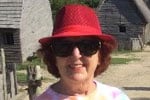
I have been so fortunate to have online partners almost daily during the pandemic isolation. It kept my skills sharp, my bridge addiction at bay and my sanity in place.
I also learned different ways to play a hand as I watched others.
Reaching the Ruby level is truly a privilege I share with my loyal partners.
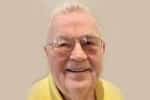
While serving in the US Air Force in Taiwan in 1960, I learned to play Double-Deck Pinochle. The Non-Commissioned-Officers (NCO) Club there held regular Pinochle tournaments with cash prizes, and I enjoyed playing a partnership card game. After a couple of months, a friend from my home state of Wisconsin approached a few of us and suggested that we learn to play Bridge, which also happened to be a partnership game. He loaned me his copy of Charles Goren’s book, and I read it cover-to-cover. We began to play rubber bridge in the NCO club. There might be two or three tables of Pinochle taking place, but there was also usually one table where the airmen and soldiers were playing bridge.
It wasn’t long before my friend became disenchanted with the simple Goren form of the game, and learned the Italian Neapolitan Club bidding system that was then in use by one of the pairs on the Italian Blue Team, the current world Bridge champions at the time. I dutifully learned the Neapolitan Club system, and we did well with it, even though it was highly artificial and complex. The fun was short-lived however, as my friend and playing partner was transferred to Bangkok, and bridge came to an end for me.
I didn’t play bridge again until after both of us had left the Air Force, and ten years later both of us were working at a mainframe computer company based in St. Paul, Minnesota. I moved to St. Paul with my family, but only lived there for about a year, so I did not play a lot of bridge. That changed when I moved to Ohio and met a computer programmer who liked to play duplicate bridge. I played at a local club a few times, and then at a tournament in Cleveland. I immediately became hooked. I joined the ACBL in 1976 and began my long and interrupted quest to become a Life Master.
The next step, of course, was to learn a less-artificial bidding system, so I learned to play a modified version of C.C. Wei’s Precision system. I found a couple of different partners in my then area of residence, the upper Midwest, and we did well, even though I was traveling a lot and could not play often. My Air Force friend would occasionally travel to my home and we would play in Regional and Sectional tournaments in the upper Midwest, culminating in the NABC in Chicago during the summer of 1980.
At that point, I started a new business venture, and my Bridge playing had to take a back seat to my business priorities. I did not play Bridge again until 2018, when I began to play at Atria-Seville in Las Vegas. Soon, I had a couple of regular partners, and began playing at all of the sanctioned clubs in Las Vegas and Henderson. Unfortunately, nobody I knew seemed to want to play Precision, so I relearned Standard American, and began to play that system.
I noticed that my partners and I would often be beaten by players who were playing the Two Over One Game Forcing system, so I learned that system in 2019 and began playing it regularly with my then-partner, Greg Bohn. It, along with my excellent partners, including Greg, Tom Moore, Barbara Dunkley, and Duane Beisner, allowed me to complete the requirements for Life Master last month online at the ACBL Regional Tournament. Now I have a new quest: Bronze Life Master.

My parents were accomplished bridge players and starred in the one game held Thursday nights in Lancaster, PA. My father retired from family medicine at age 53 due to a failing heart. He and my mother wintered in Florida, playing bridge together exclusively until he died. After that, bridge became a lifeline for my mother. She is now in her 90s and has earned more than 6,000 masterpoints.
I learned the game during my sophomore year at Brandeis University where I became president of the bridge club. Bridge was popular in New England and there was good competition with other universities such as Harvard and MIT.
My first foray into tournament bridge was a Friday master pairs game held at a Boston sectional. I played with my then girlfriend and we rolled up a 23% game. Everyone commented on how nice it was to have young people playing and then proceeded to rip us to pieces.
I began to take bridge seriously while attending medical school in Philadelphia. By the third year I was making The McKenney list. In those days the regional winners were photographed for the ACBL Bulletin. I did my best to hide the magazine from my parents. My excellent partners continued to improve my game. I played with Billy Gough, Joey Livezey, Jay Apfelbaum, Craig Robinson, Arnie Fisher and Dave Treadwell.
In my second year of Medical School I met Carole Gold at the Lancaster Regional. It was love at first sight for me and we were married in 1979. Carole taught bridge in Lancaster inspiring her students to play and to eventually teach bridge themselves. Soon there were five games per week.
When I joined my father in family medicine work consumed most of my time. I played infrequently for 15 years. For 10 of those years I worked alone. The fall nationals came to Lancaster in 1989. Three friends and I entered the North American Swiss Teams, a six-session event. My partner Ken Meyer and I played a Precision system and our teammates Eugene Gardner and Ed Shapiro played a Blue Team Club. I worked during the event with morning office hours and hospital rounds. I am on the short list of national champions who worked and took calls while winning. The final day featured very strong competition. In his New York Times article, Alan Truscott called us “The Cinderella Team.” Actually, we were “Princes Charming” — a regular team and partnerships who had achieved much success.
In the late ‘90s, Carole and I became snowbirds buying a home in Scottsdale, AZ. I continued working in Lancaster and gradually spent more time in AZ. Our son Stephen Gold, a wonderful physician, slowly took over management of the practice and we remain independent today. We also have a daughter Gale Gold Nichols who is Executive Director of the Kelly School of Business MBA Program at Indiana University. We now spend about half our time in Scottsdale and play much more bridge.
We enjoy the bridge in the West. Carole and I have played many tournaments and have had excellent results with our dear friends Buddy Marsh and Marianne Spanier. I have an excellent partnership with Markland Jones and consider other fine players like Ben Blacik, Ken Titow, Harv Sidhu and Ken Klein to be friends and partners. To say bridge has been a large part of my life would be an understatement. As we all know, bridge is a fascinating and challenging game. I would not have met my beautiful and talented wife were it not for bridge. We have made many wonderful friends in Arizona through bridge. Bridge helped us acclimate to our new home in Scottsdale. We hope to see everyone back at the table soon.
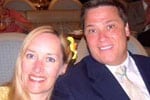
JB and Shari Smart, Gilbert, AZ, placed third in the North American Online Bridge Championships 0-1500 Pairs event, Sunday March 21. JB and Shari Smart, Gilbert, AZ, placed third overall in the North American Online Bridge Championships 0-1500 pairs event Sunday, March 21, 2021. It was worth a whopping 22.47 gold. Shari has now met her gold requirement for Life Master and, as usual, JB is close behind.
The pair played steady over two days during all four sessions of bridge. In the first session on Saturday they had a 58.12 percent, second in session and 13th overall. Their second session was 51.42 percent, 4th in session and qualified 23rd overall. Sixty pairs qualified out of a field of 122 for Sunday’s final two sessions. In Sunday’s third session they scored a 53.71 percent, fifth in session and 12th overall. They finished the fourth and final session with a 59.55 percent game, second in section and third overall in the event.
JB and Shari were surprised to finish third overall since they were just playing steady bridge. They said they didn’t do anything spectacular but also didn’t make too many game-changing mistakes.
“Lots of coffee and a little calculated risk taking seemed to be a good formula,” commented JB.
JB and Shari took their first bridge lessons in 2010 while on a cruise ship. Life got too busy and they didn’t get back to playing more bridge until 2018. For the last two years, Shari has won the Unit 351 Mini-McKenney Race and was the Ace of Clubs champion for her masterpoint level. She just edged out JB in both races in 2019 by .12mp. In 2020, she increased her lead over JB. He is such a nice guy to let Shari win. He just didn’t want to have to sleep on the couch.
Congratulations to this couple and good luck in the future.
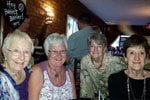
In 2020, I planned to go to as many tournaments as possible to reach my goal of Silver Life Master (SLM) by the end of the year. Due to the pandemic I played my last face-to-face tournament at the Tucson Winter Regional in March. After being shut down and realizing that it was going to last for some time, I decided to get my SLM another way. Here in Sierra Vista, AZ we have a very small club but many great bridge players. Since I can’t stand playing with robots I took this opportunity of playing with several of these players on BBO. Not only did I learn a lot of good bridge but I also got my SLM with one day to spare in the year. High Desert Hands Bridge Club of Sunsites, an even smaller club than ours, was able to continue their game for many months, and we were able to play in a lot of them. So as terrible as the year was, I was able to put some of my spare time to good use and accomplish something worthwhile for me.
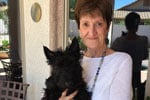
I started playing “party” bridge for the first time when I moved to Sierra Vista in 2020.
In the fall of 2013 my good friend and my bridge mentor, Margaret Glenn, convinced me to try bridge at our local club –Thunder Mountain. In November of 2013 I went with Margaret to my first bridge tournament in Tucson. While there she persuaded me to join the ACBL. I earned 12 masterpoints in Tucson. I was ecstatic and I was hooked!
Through the years Margaret has spent hours with untold patience mentoring me. I can’t thank her enough. My thanks also to our most constant partners at tournaments Jan Dragoo and Mary Blanchard.
While I enjoy playing bridge online with a partner I must say playing with a crazed robot is a challenge.
I try to play bridge three times a week at Thunder Mountain Bridge Club in Sierra Vista, AZ which I sincerely hope can re-open. We also play at the High Desert Hands Bridge Club of Sunsites.
I love going to tournaments, meeting new and seeing old friends, enjoying new places and new restaurants as well.
We bridge lovers all hope in this ever-changing world that the game we love so much will survive.
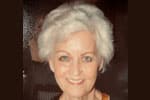
I started playing at ACBL when a partner at Duplicate asked me to go to the Bridge Club of Baltimore as she needed black points. Additional partners, Bridge lessons and a few years later, I achieved Life Master. Then, 5 years ago, we moved from Clarksville, Maryland to Broomfield, Colorado. Since coming here, I’ve played with several faithful partners at Boulder, Anthem Ranch and Golden from whom I’ve learned from and who’ve made it rewarding and fun. The very existence of Bridge Base On-Line (BBO) during the Pandemic has been a super blessing. BBO enabled me to continue playing with them and maintain friendships. At BBO I can play more often; against and with people throughout the world and in the robot world; achieving Silver Life Master. I’ve met so many interesting people playing bridge and look forward to seeing everyone once again playing those challenging games at the local club. Luv Colorado!
Go ACBL!!!
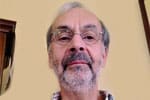
Like many bridge players, I first became exposed to bridge watching my parents play. They used to play “social” bridge with their friends in London but, as I recall as a kid, the only time my parents ever argued was over the bridge table. Their friends were even worse – hurling nasty insults across the table which, as a 10 or 11 year old kid, was somewhat unsettling to my impressionable ears. Anyway, I quickly learned the basics of the game and formed a foursome with three of my school friends who had also watched their parents play.
From the age of 11 or 12, we played regularly every Saturday night, starting at 7 or 8 pm and going through until 4 or 5 in the morning for the next 4 or 5 years. It was then that I realized that my other friends had begun to date and I quickly concluded that there were much more interesting ways to spend my Saturday nights and so the weekly bridge game disbanded.
I didn’t return to bridge again until my mid-twenties. I was in South Africa at the time working for an insurance company and began to play in the national insurance industry bridge league. My regular partner was an imposing Scottish alcoholic whose performance as a bridge player resembled a normal distribution bell curve. To be specific, he was a merely average player if he hadn’t had a drink all day but his performance improved dramatically as his alcohol intake increased and then, later, fell off a cliff. At the bridge table, I got to learn quickly the point when his abilities peaked, and urged him at that point to slow his drinking down so we could enjoy his masterful play for as long as possible. Unfortunately, there were too many occasions when he rapidly deteriorated but there was one game I particularly remember. We were down to play in a Swiss teams event in the insurance industry league against by far the best team. Each individual member was the local equivalent of a Grand Life Master or better. Not only were they very good but they knew it too and, as I recall, had never lost a game. As the game began, they clearly relished the thought of pummeling us into the ground, particularly as my partner had his drinks neatly lined up on the side table. To cut a long story short, we beat them, thanks mainly to my partner’s alcohol-induced masterful psych bidding. We were narrowly ahead at the break and I remember them being so bamboozled that they went into a huddle for 10 or 15 minutes.
After I left South Africa, I didn’t play competitive bridge again until I retired several years ago – a 40-year hiatus. It was then that I joined Mountainview Bridge Club and was surprised to encounter bidding boxes for the first time and strange mechanical scoring devices. What was even stranger was that no-one played Acol. After my first embarrassing game at Mountainview, I took a few weeks off to read up on Standard American and, later, 2/1. After returning armed with my newly gained knowledge of American bidding systems, I started to become a little more confident – until I made an illegal bid. The bidding had gone 1D/IH before it came to me to bid. I had four spades and decided quickly that I had a perfect hand for a negative double. I confidently doubled and, to my dismay, there was a pause and then all three players around the table, almost in unison, and my partner being the loudest, called for the director. Well, I’d doubled my partner. Even the director didn’t know how to handle that one and had to retrieve her book.
To conclude, I never expected that bridge would be a significant part of my life as a retiree but the camaraderie at Mountainview, Northwest Tucson and at other clubs and local tournaments, despite the current hiatus, has ensured that will continue.
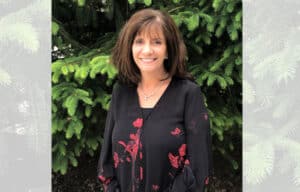
Credits Bridge Community for Achievement
Denise Klein Bronze Life Master Unit 361 Denver, CO I was very fortunate to learn this game through small group lessons with Curt Soloff. He
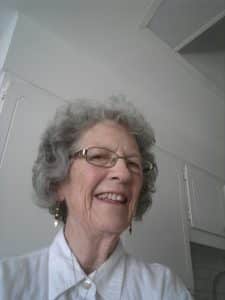
Better Late Than Never: My Road to Life Master
By Terri Grant, Life Master, Unit 351. I grew up hearing my parents speak of the fun they’d had playing “Culbertson Bridge”. I recall my mother warning
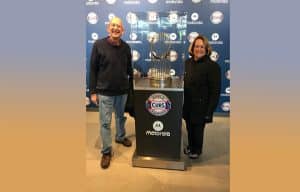
2020: A Bridge Odyssey : How the Big Scare Pushed us Over the Top
By Jerry and Terry Neuman, Life Masters, Unit 356, April 2021. We each learned bridge as teenagers although neither of us would ever categorize it as a significant part
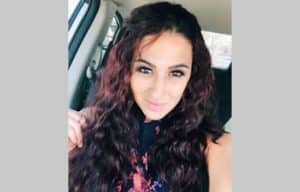
Totally Hooked and Forever Grateful
By Tiffany Destefano, Unit 373, NABC Master. I took my first bridge lesson in April of 2018. My bridge teachers, Toby McEvoy and Chris Hahn, had
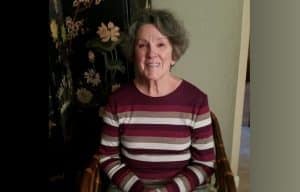
You Owe it to your Partner to Keep Learning!
By Paige Hamner, Unit 356, Life Master. After reading other autobiographical sketches, it’s apparent that my duplicate bridge life cycle is quite common.The start – a LOT of
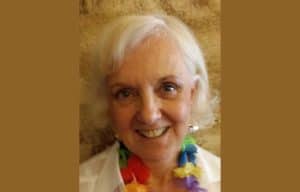
Online Bridge has Kept Me Going!
By Karlene Spivak, Unit 364, Regional Master. As the pandemic shut down our bridge clubs, it opened an opportunity for me! Instead of driving 1/2
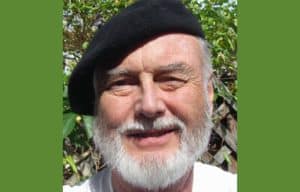
Looking forward to attending face-to-face tournaments!
By David Barbour, Unit 374. I first played bridge in high school with a small group of friends. I started to play regularly in college,
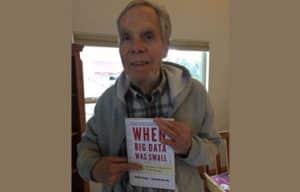
From Baseball to Bridge
By Dick Cramer, Unit 383, ACBL Regional Master. A year and a half ago, after finishing a memoir that a major league baseball historian persuaded

Full Speed Ahead
By Donna Hofer, Unit 351. I have been a duplicate bridge player for the last 9½ years. I have a great love for the game and I
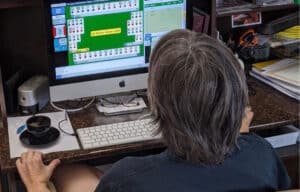
You Can Do This!
Pictured above: Regina playing bridge on BBO while sheltering in place.To all you newbies out there: if I can reach Club Master status, you can

Learning Bridge
My husband Ed and I left January 4, 2020 for a five-month world cruise which did not go as planned. About six weeks in, the
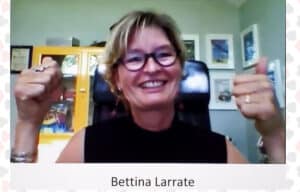
Bridge: The Journey is the Goal
I just received a congratulatory email from our District National Director for my achievement of reaching the rank of Club Master. That means, I have
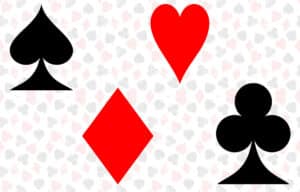
The challenges of the new normal
Bridge On Shea, like all businesses at this time, is trying to find a NEW NORMAL. What we’ve discovered is the NEW encompasses everything we
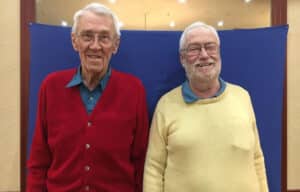
Believe
Robert Reierson (left) and Denis Nathan, Tucson Winter Sectional, January 2020.Robert Reierson, Unit 356, Green Valley, AZ demonstrates that age is just a number when
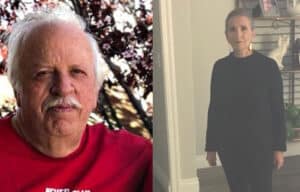
A Mentor Worth her Weight in Gold
Finding a mentor who will stick with you, improve your bridge experience and your game is priceless. It happened to Loren Moore, Las Vegas Unit
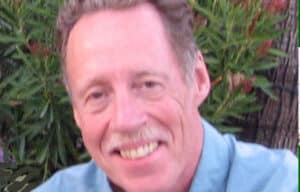
Newly minted d17 life masters share their journey
Dick Bryant and Kathy Feeney never take for granted how fortunate they are to have each other as consistent partners. Kathy Feeney Our bridge adventure


